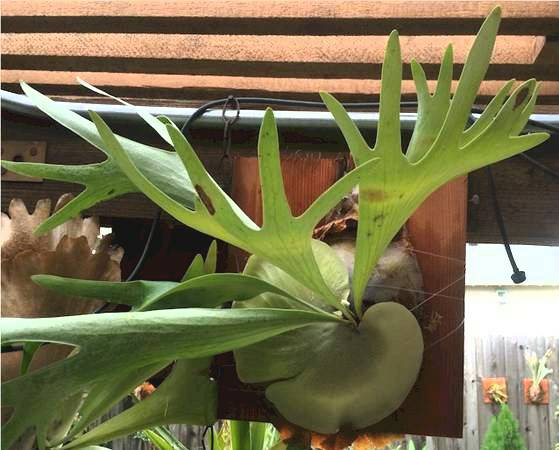 |
P.
hillii Jimmie (left) is a cultivar from the Steve Talnadge Fern
Nursery in San Diego prior to 1974. The vertical veins in the
fertile fronds are less pronounced and the underside has a fuzzy hair
appearance. The shield fronds tend to hug the mounting making it
difficult to water. We have had 4x4 patio post rot out
because the plant tightly hugs its mounting and they never dry
out. The shield fronds can be very tall and majestic while
the fertile fronds have long fingers on a very broad frond. |
|
| |
The
P. hillii Delight (right) has huge broad fertile fronds with
rounded lobes on the finger ends. Very rare
Recent observations of the P. willinckii Bloomei show
similar shaped fertile frond as shown here. They are very
narrow as the sprout out of the bud and become quote large as
they get into a less crowded area. With the P.
willinckii there are twelve fertile fronds making it quite
crowded near the bud. |
 |
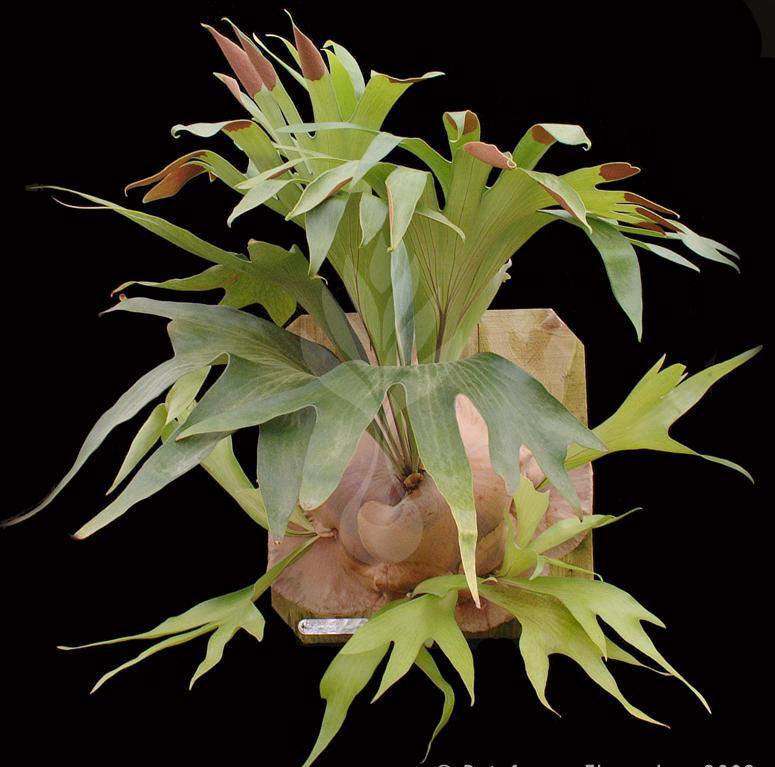 |
P.
hillii, cv. Bloomei (left) is similar to the cv. Jimmie, but the
vertical veins in the fertile fronds are more pronounced and there is
little or no fuzzy hair on the underside. Some times the Bloomei
is classified as its own species, P. bloomei but it is probably
a cultivar, P. hillii cv Bloomei.
Recent observations of the Bloomei suggest it is in the P.
willinckii family and not the P. hillii family.
Check out this link for more information on
P. williicnkii Bloomei |
|
| |
P.
hillii, cv. Diversifolium (right) is reported to be a larger
growing variety than most P. hillii.
Further
studies have determined the Diversivolium is a hybrid of P.
bifurecatum and P. hillii.
|
 |
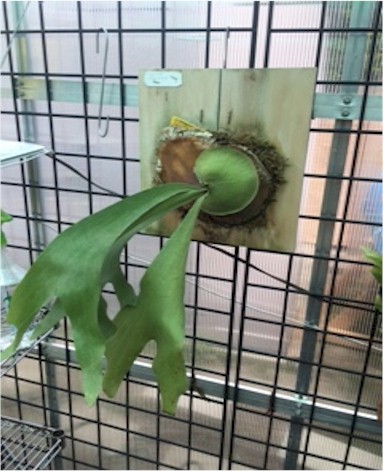 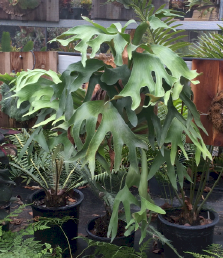
P. hillii, cv Panama (left &
right) is
a small slow growing hillii and ideal for limited space where one
can not afford to grow a humongous platy.
The photo on the right
is a well established P. hillii cv Panama from Norm Nakanishi's
garden at LAIFS. It clearly shows the wide multi fingered
fertile frond. There is a unique
web
page for the Panama |
|
 P. hillii, cv Hula Hands (right) is a unique
platy with small finger like tips on the fertile fronds. The
Hula Hands is one of two platy's from Polynesia. The South Seas is
the other one.
I have a YouTube video on the Hula Hands you might want to review
at this
link. Since publishing the video, I notices a unique
coloring of a dying fertile frond as seen in this photo. P. hillii, cv Hula Hands (right) is a unique
platy with small finger like tips on the fertile fronds. The
Hula Hands is one of two platy's from Polynesia. The South Seas is
the other one.
I have a YouTube video on the Hula Hands you might want to review
at this
link. Since publishing the video, I notices a unique
coloring of a dying fertile frond as seen in this photo.
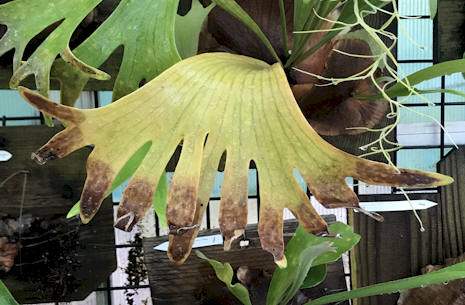
|
|
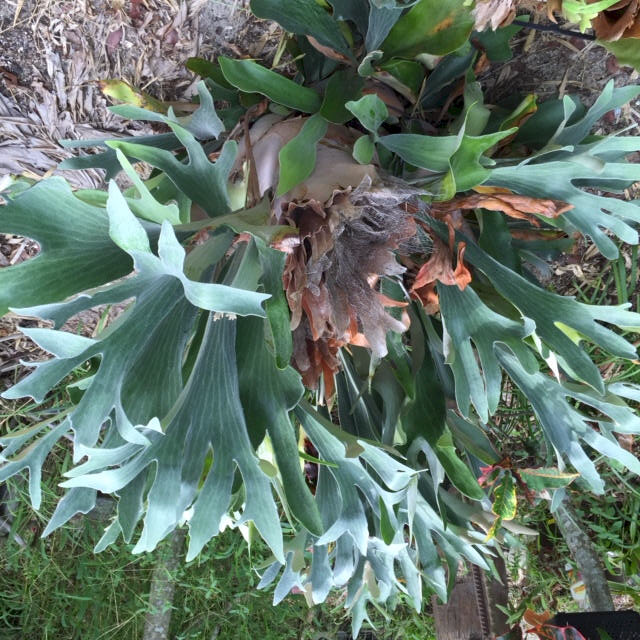 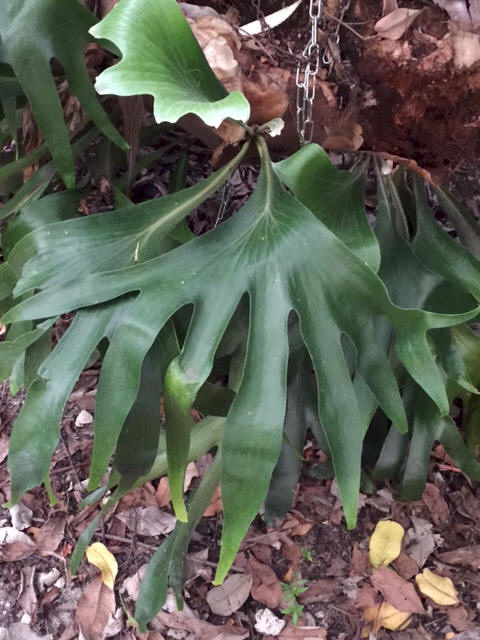
Large P. Bloomei from West central Gulf Coast of Florida submitted
by Denise. Notice how big the fronds are on the left photo.
Recent observations of the Bloomei suggest it is in the P.
willinckii family and not the P. hillii family.
Check out this link for more information on
P. williicnkii Bloomei
|
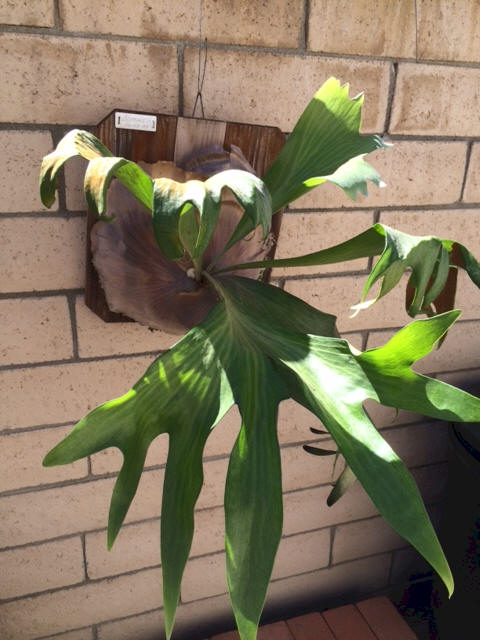
This Platycerium hillii 'Bloomei' photo is from Tom
Gauci's collection in Huntington Beach. Nice dark green and
wide fertile fronds.Recent observations of the Bloomei suggest
it is in the P. willinckii family and not the P. hillii
family. Check out this link for more information on
P. williicnkii Bloomei |
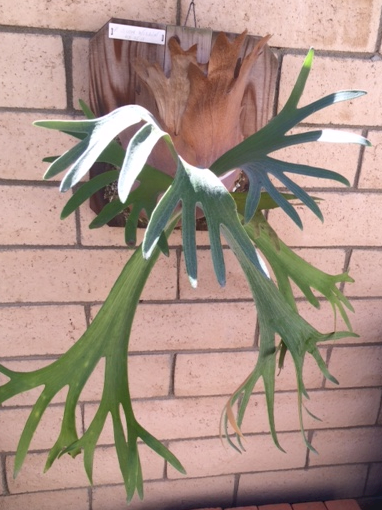 |
Platycerium hillii 'Siam Willin' is
another from Tom Gauci's collection in Huntington Beach. It
is believed to be an import from Thailand. |
| This Platycerium hillii 'Geni'
is from Tom Gauci's collection in Huntington Beach. Notice
the nice wide fertile fronds and dark green |
 |
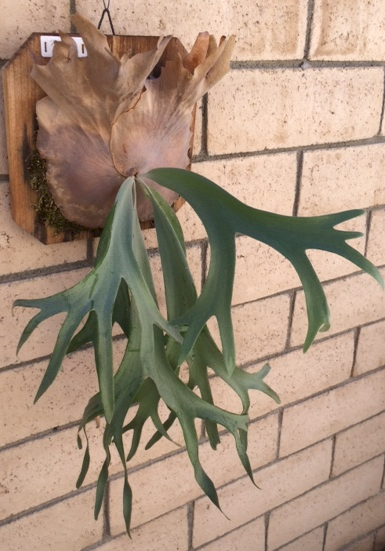
This P. hillii 'Mayii' is from Tom Gauci's collection in
Huntington Beach. Nice wide deeply forked fertile fronds
typicall of P. hillii. |
| This platycerium has been identified
as a P. hillii cv Black by Lyus Ciapus Flora on Planet
Platycerium in Facebook. Similar color to the P. hillii
Delight above but the fertile fronts are significantly
different. |
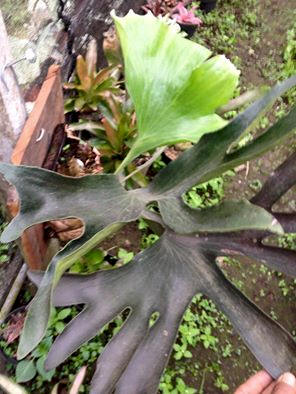 |
|
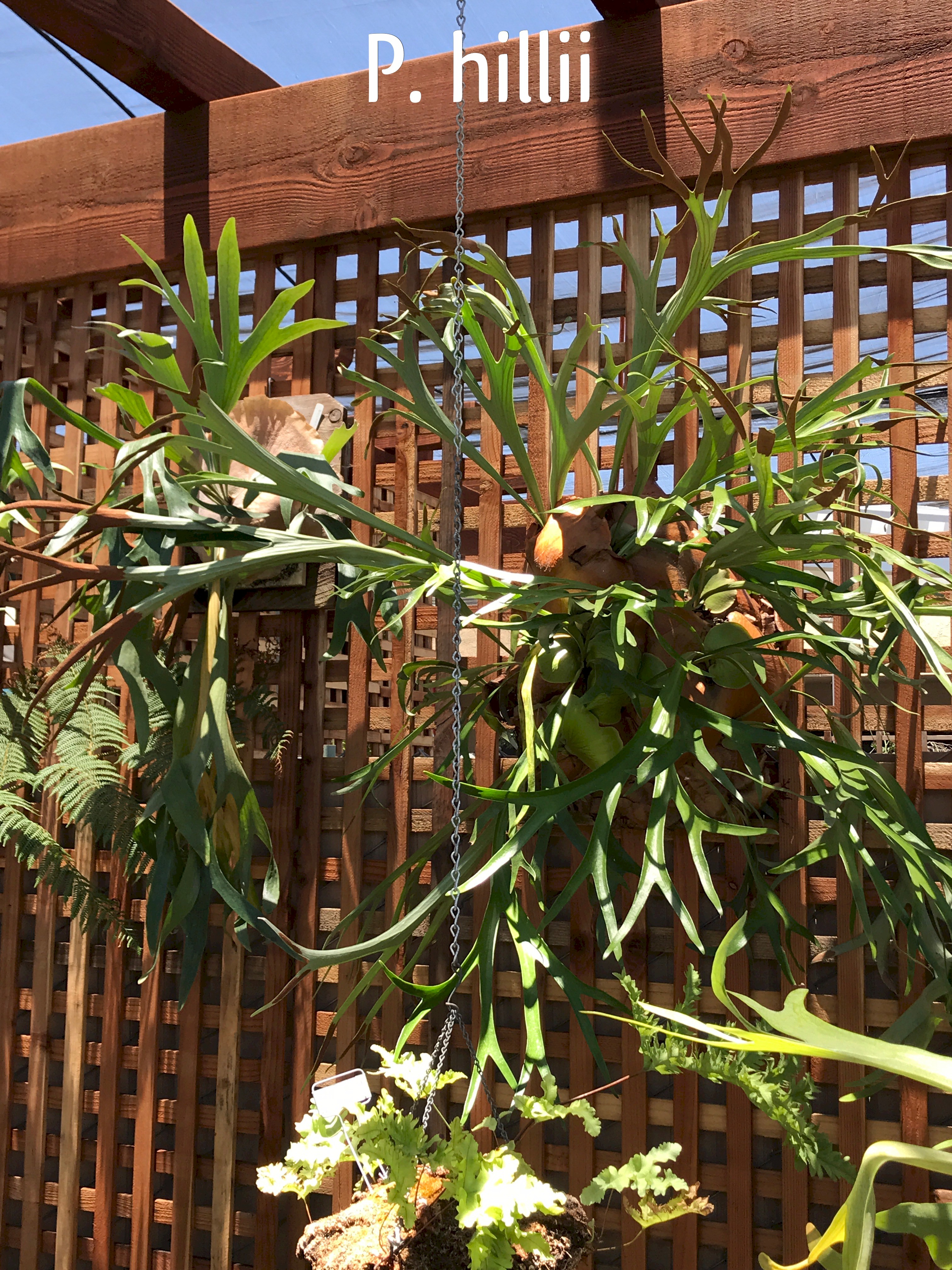 |
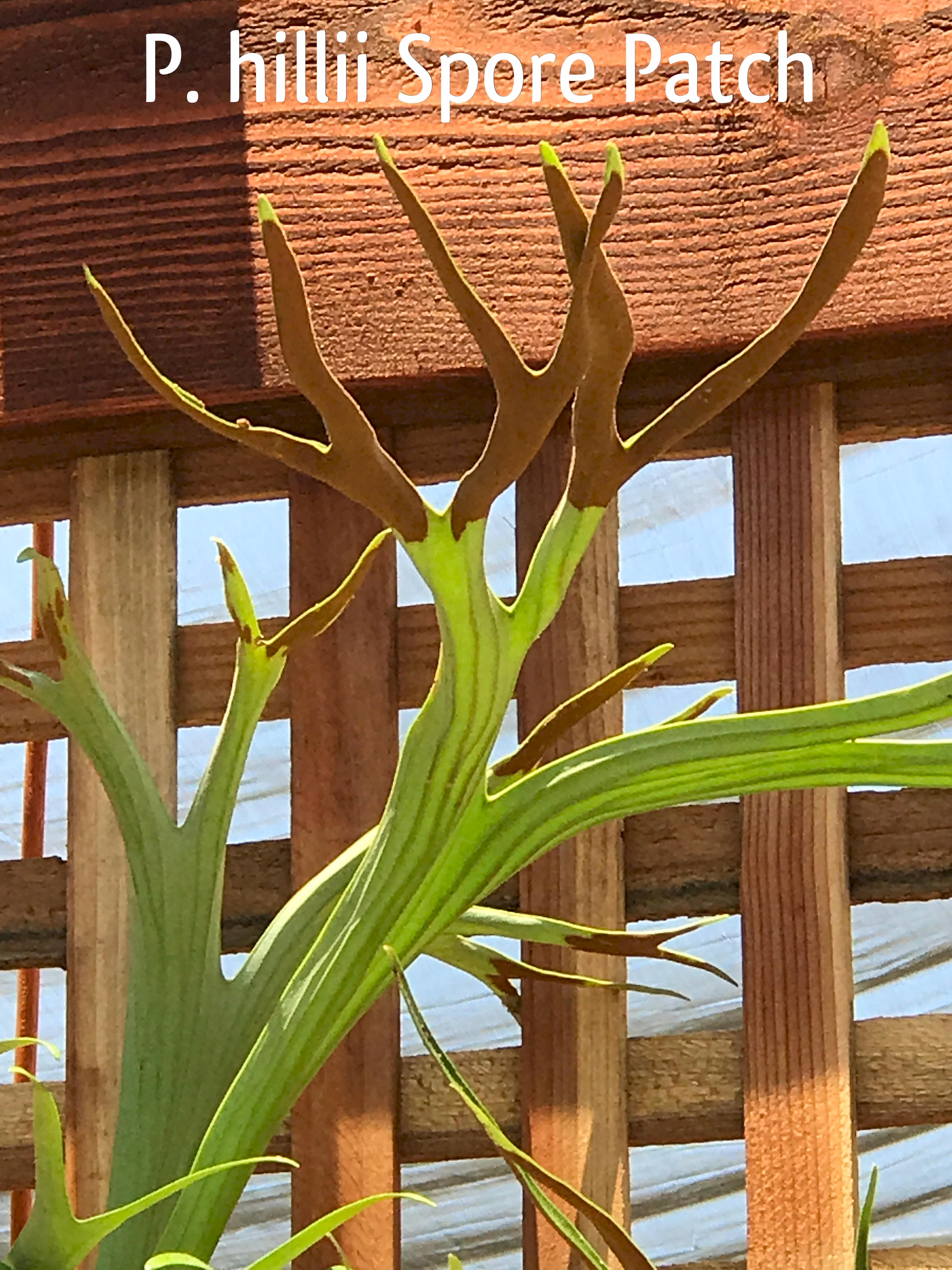 This
staghorn was on display by the San Diego Fern Society at the San
Diego County Fair in Del Mar, California. I feel it is a
P. hillii because ths shield fronds are round on top and the
fertile fronds are wide with long narrow fingers as shown on
right. The spore patch is also unique as it extends from
the tip to past the fork in the frond. I wish I new more
about the identity of this platycerium. This
staghorn was on display by the San Diego Fern Society at the San
Diego County Fair in Del Mar, California. I feel it is a
P. hillii because ths shield fronds are round on top and the
fertile fronds are wide with long narrow fingers as shown on
right. The spore patch is also unique as it extends from
the tip to past the fork in the frond. I wish I new more
about the identity of this platycerium. |
| |
|
|
|
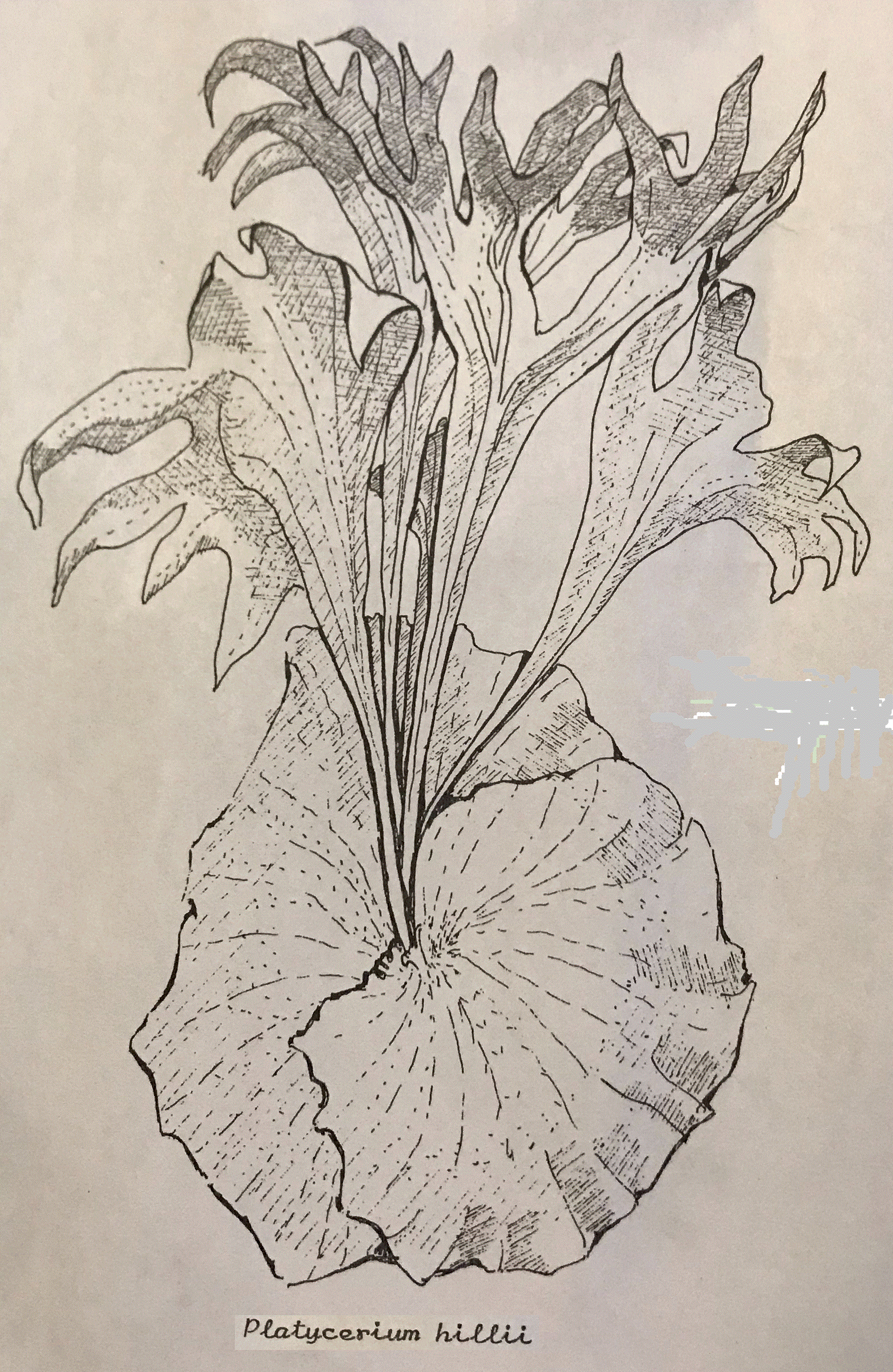






 P. hillii, cv Hula Hands (right) is a unique
platy with small finger like tips on the fertile fronds. The
Hula Hands is one of two platy's from Polynesia. The South Seas is
the other one.
I have a YouTube video on the Hula Hands you might want to review
at this
P. hillii, cv Hula Hands (right) is a unique
platy with small finger like tips on the fertile fronds. The
Hula Hands is one of two platy's from Polynesia. The South Seas is
the other one.
I have a YouTube video on the Hula Hands you might want to review
at this 








 This
staghorn was on display by the San Diego Fern Society at the San
Diego County Fair in Del Mar, California. I feel it is a
P. hillii because ths shield fronds are round on top and the
fertile fronds are wide with long narrow fingers as shown on
right. The spore patch is also unique as it extends from
the tip to past the fork in the frond. I wish I new more
about the identity of this platycerium.
This
staghorn was on display by the San Diego Fern Society at the San
Diego County Fair in Del Mar, California. I feel it is a
P. hillii because ths shield fronds are round on top and the
fertile fronds are wide with long narrow fingers as shown on
right. The spore patch is also unique as it extends from
the tip to past the fork in the frond. I wish I new more
about the identity of this platycerium.